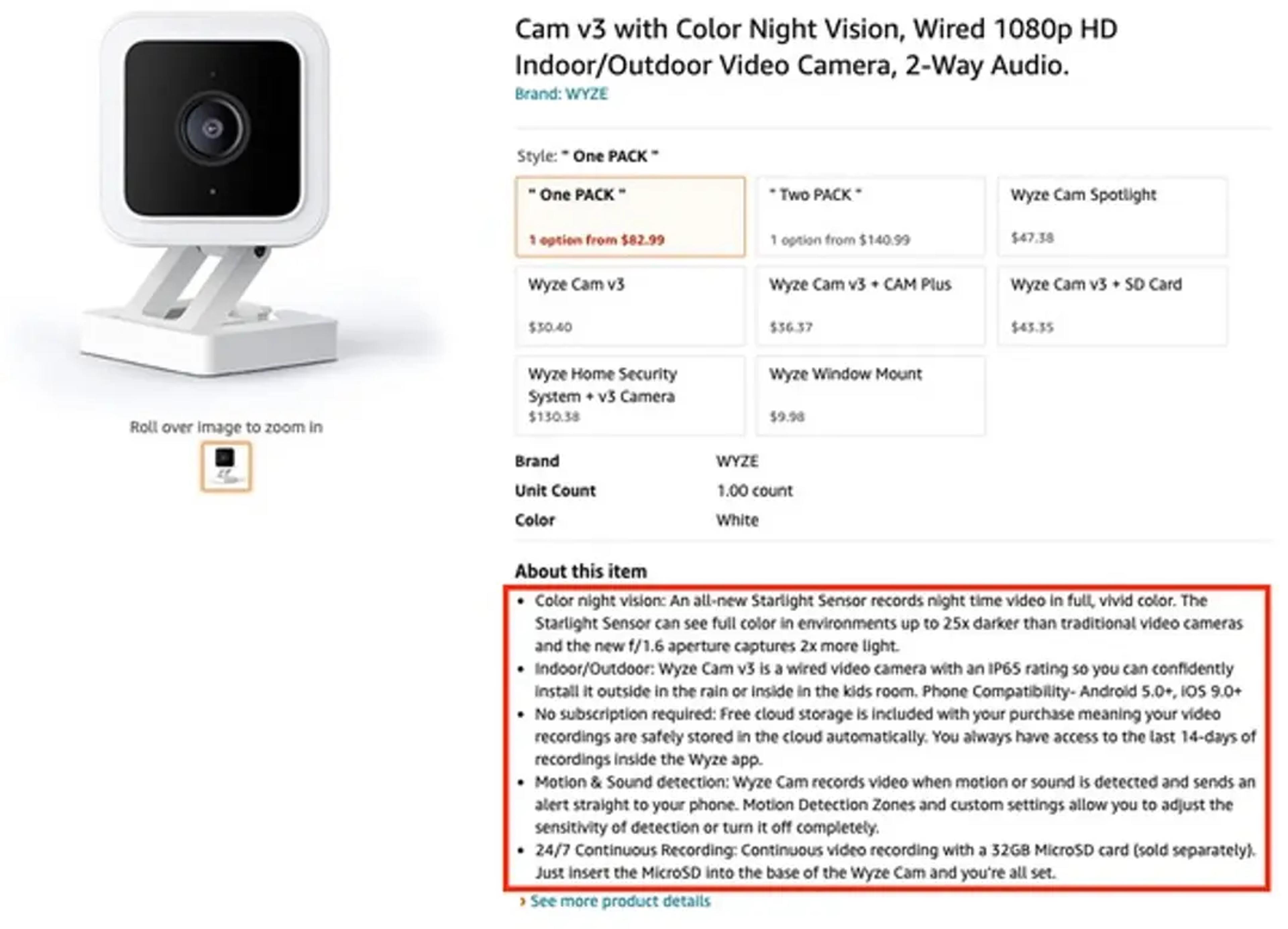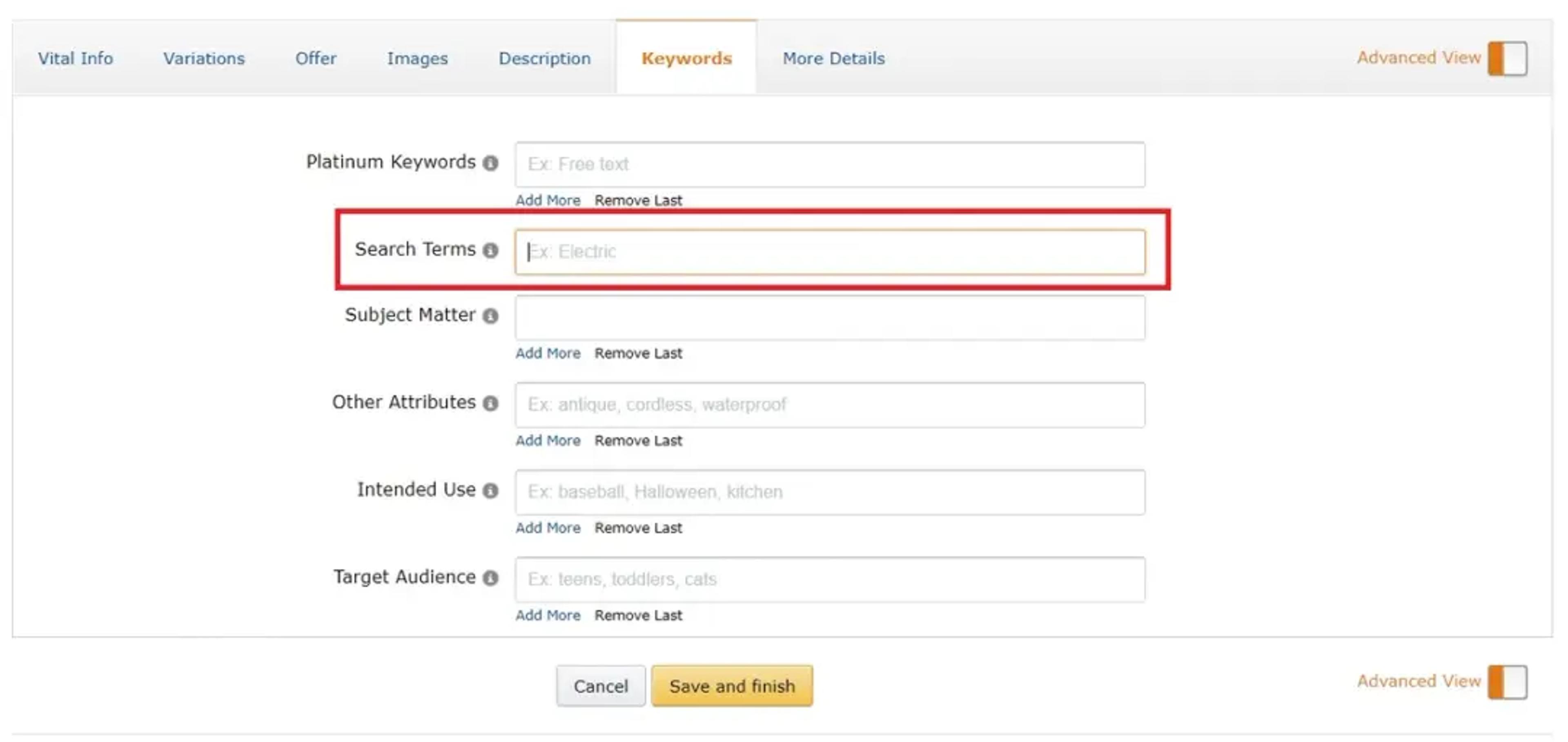/Master Amazon SEO: Get More Visibility

Master Amazon SEO: Get More Visibility
This guide will show you the secrets of Amazon SEO (search engine optimization) to get your product listings to show up higher in Amazon search results. Ranking higher can increase visibility and sales so we’ll show you how to get your product listings to rise to the top of the Amazon search bar.
Quick Wins
- Amazon SEO is about visibility and sales, transactional intent and optimizing with relevant keywords.
- Knowing the A10 algorithm, which prioritizes sales velocity and conversion rates is key to ranking on Amazon.
- Optimizing with high quality images, compelling copy and competitive pricing will get customer engagement and conversion.
What is Amazon SEO
The goal of Amazon SEO is to get your product listings to show up higher in search results and increase traffic and online sales. The key is relevance – it’s not enough to just list products. They must align with high purchasing intent determined by the algorithm. This is different from standard SEO which is about informational content not transactional content.

To get more visibility and sales through Amazon’s search engine you need to select the right, relevant keywords, fine tune your product listings for maximum appeal and have a deep understanding of how the algorithm works. By doing this you’ll get your products to show up when customers search for what they need on Amazon – and increase conversion rates.
What is Amazon SEO?
Amazon SEO is about getting products and brands to show up in Amazon search results. The goal is different from standard SEO which is about content, instead it’s about improving product listings to get better placement in Amazon search results. Optimizing product titles, descriptions and including relevant keywords is key to making a listing relevant and effective.
For an Amazon product listing to do well in SEO each component needs to be fine tuned – this includes not just the product title but also bullet points related keywords and backend keywords. By choosing the right categories for your products and including strategic target keywords in your listings you can get higher positions in the search engine results pages – and get more buyers to see those listings.
Why Amazon SEO Matters
Amazon SEO is key to getting more visibility and sales on the Amazon platform. Proper Amazon SEO implementation will get you better search rankings, higher CTR and more conversions. Sellers who use Amazon SEO can tap into Amazon’s huge customer base and get more exposure and sales opportunities.
Not using Amazon SEO will get you less traffic and less sales and hold back your seller growth. Consistent Amazon SEO is essential to keep your rankings strong and stay ahead of the competition.
Long term Amazon SEO will get you sustainable rankings and sales growth.
How the A10 algorithm works
The A10 algorithm is designed to find and promote the most relevant products to a customer’s search query. By using artificial intelligence and natural language processing it’s focused on transactional intent to improve the overall shopping experience. Products that are most relevant to the customer search and have good ratings will get higher search rankings.
If you want your product listings to show up in search results on Amazon. Creating an Amazon SEO strategy requires a deep understanding of how the A10 algorithm works and what it looks for. This knowledge will help you not only improve your position in those search results but also increase visibility for your products across the Amazon platform.
A10 Algorithm Key Factors
The A10 algorithm looks at multiple factors including keyword usage, conversion rates, customer reviews and historical sales data to rank a product. Sales velocity is key. It’s the cumulative revenue of a product over time and is important for Amazon ranking. Conversion rate – how often visitors to a product page convert to a purchase – is critical for Amazon SEO.
Traffic patterns, consumer behavior and market fluctuations all impact conversion rate. It’s the combination of sales velocity and conversion rate that the A10 algorithm looks at to determine how products are displayed and ranked on the Amazon marketplace.
A9 vs A10 Algorithm
Amazon’s A9 algorithm which was designed to sell products to millions of customers was replaced by Amazon’s algorithm in December 2020. The A10 algorithm is focused on transactional intent and targets products that will drive sales whereas the A9 algorithm looked at customer past purchases.
These differences means products are ranked differently on Amazon so you need to adapt to the new algorithm for more visibility and sales. Understanding these changes will help you fine tune your Amazon SEO to the A10 algorithm.
Optimize Your Amazon Product Listings
To get more visibility and sales on Amazon you need to optimize your product listings with focus on key areas like product title, images, bullet points, description and backend keywords. By fine tuning these areas of your listing you can move your product up in the search results and make it more appealing and discoverable.
To optimize a listing you need to prioritize relevance and conversion rates. Embed your carefully chosen keywords in your content and highlight your unique selling propositions (USPs) and you will see your product more visible on Amazon and higher in customer searches.
Keyword Research
The foundation of an Amazon SEO strategy is keyword selection and usage which determines a product’s visibility organic search results and subsequent sales. Using keywords in your listings is critical to get your products to show up under relevant search terms and queries. To get more insight into customer search behavior sellers can use tools like Product Opportunity Explorer and Amazon Brand Analytics to find high value keywords.
Using the Reverse ASIN Lookup tool you can look into competitors’ successful products to find specific keywords that are driving traffic to them. Including up to 50 quality keywords in each product listing can make a big impact on search optimization. Focusing on long tail keywords will give you better conversion rates and more targeted traffic for people looking for specific products or features.
Product Titles
Crafting informative product descriptions and titles is key to being relevant to the A10 algorithm. Optimizing these product titles requires including primary keywords, brand name, product line and important details to get Amazon rankings.

You need to include the primary keyword in the product title for ranking purposes and add 2-3 more keywords to optimize it. Avoid keyword stuffing to not harm your click through rates.
Product Description
Product description is key to convince customers to buy by highlighting the product’s benefits. They may not be as important as titles or bullet points but still impact purchasing decisions. A good product description includes chosen keywords and USPs, full details and compelling copy.

Including keywords naturally can improve user experience and product searchability. Instead of keyword stuffing which can harm readability, using natural language is key to optimizing your product descriptions.
Backend Keywords
Backend keywords is part of Amazon SEO where a product can rank for search queries while hidden from the customer’s view. You need to input these keywords in lowercase and separate them with spaces, no articles or prepositions. There is a limit of 249 bytes for backend keyword data and no single field can exceed 50 characters.

You can increase product visibility by including synonyms and variant names for key features in your backend keywords so you can optimize without overwhelming the main listing details. Avoid word duplication, quotation marks or adding irrelevant terms when populating your backend keywords.
Visual Appeal with High Quality Images
High quality product images help customers to evaluate products better and are linked to higher conversion rates on Amazon. These images improve the shopping experience and lower return rates. High quality images is key to online shopping experience, customer perception and decision.
To optimize your product listing use high quality images that represent your products. This will improve customer expectation and brand visibility and sales.
Consider using an AI tool like Claid to create better lifestyle images.
Image Specifications
For best viewing experience Amazon recommends images with at least 1,000 pixels on the longest side. To enable zoom on product listing images should have at least 1,000 pixels either in width or height. Amazon suggests using white background for all product images.
To increase visibility and attractiveness of products on Amazon merchants should aim to include 6 images and 1 video per listing. These visual elements are key to customer interaction with the product and conversion rate.
A+ Content
A+ Content allows sellers to add text, images, videos and comparison charts to their product detail pages. These can drive sales up by making the product more visual and informative. Having rich media content on product pages can improve overall shopping experience for customers and increase customer satisfaction and conversion rate.
To access A+ Content features sellers must be part of Amazon’s Brand Registry program. To use A+ Content within this program brands need to register and have a registered trademark. This requirement ensures the enriched content is unique and trustworthy which can boost product quality and visibility among Amazon customers.
Reviews and Ratings
Reviews and ratings is part of Amazon SEO, it affects product ranking and visibility. Products with more and higher reviews rank higher in search engines for broader keywords and impact click through rate and sales. Higher positive reviews increase product value and credibility and rank higher in search results.
Get satisfied customers to leave positive reviews can increase product visibility and sales on Amazon. Leverage reviews and ratings to build brand awareness and trust and more sales and stronger market presence.
Request Positive Reviews
Send follow up emails to customers to request for review can increase positive product reviews. Automate the process with a ‘Request a Review’ button and sellers can collect honest feedback from their customers.
Avoid dishonest methods like fake reviews or ask friends and family for testimonials. Focus on building brand recognition through real customer experiences and reviews. On Amazon positive reviews is key to increase product visibility and standing.
Managing Negative Feedback
To improve customer experience you need to listen and resolve the issues raised by customers in their negative reviews. Engage constructively with such feedback to restore seller’s confidence and reputation.
By addressing negative comments you show customer satisfaction is important which builds trust to the brand.
Pricing and Promotion
Adjusting price strategically can increase product ranking and sales on Amazon. You need to benchmark your price against your competitors who offer similar products as this affects customer decision. Higher price than competitors can decrease conversion rate which can impact product rankings and visibility in search results.
Use promotional tactics with competitive pricing to increase sales velocity and preserve product ranking. Adept pricing and promotion is key to increase sales and build brand on Amazon.
Competitive Pricing Strategies
Price your product lower at launch is called penetrative pricing to increase sales and get reviews fast. This strategy is to build brand awareness and get customer feedback fast. Sellers need to monitor their competitors’ pricing strategy so they can maintain their product price competitiveness. Higher price than competitors can result to huge sales drop.
To be competitive you need to undercut or match competitors’ price. Once a seller has enough reviews they can optimize their product pricing to increase their ratings and continue to drive sales on Amazon.
Promotions and Discounts
Use coupons on Amazon to increase click through and conversion rate and customer interaction with your product. This way consumers can save more and buy more and be more satisfied. This promotional tactic will lead to long term seller growth.
Amazon SEO Tracking and Measurement
Tracking and measuring is key to improve your Amazon SEO and increase product visibility and sales. Sellers can use tools to track their Amazon SEO performance and adjust accordingly for continuous improvement. For example Jungle Scout’s Rank Tracker can automatically track where your product is ranking on Amazon.
The detailed report of how your top search terms and queries perform on Amazon and the associated search volume can be seen on The Amazon Search Report. It will show you which keywords are driving the search volume and traffic to your product pages.
By testing different title variations you get to know which one is more customer friendly. This way sellers can refine their product listing based on data on what potential customers would like.
Analytics Tools
Use analytics tools like Semrush’s Search Insights to get your keyword performance and product visibility insights. Tools like AMZScout Keyword Tracker allows sellers to add products and track their keyword ranking. These tools can track search query volume, clicks and purchases and give you data insights.
Try Semrush’s Search Insights by entering your product URL or ASIN to see the top search query performance. This data will help you refine your SEO and increase product visibility on Amazon.
AI Tools
Amazon sellers can leverage several AI tools to enhance their product rankings and optimize for Amazon SEO keywords. Here's a brief overview of some key options:
- Helium 10's AI Listing Builder: This tool uses artificial intelligence to create optimized product titles, bullet points, and descriptions based on keyword research and competitor analysis.
- Perci.ai: An AI-powered tool specifically designed for Amazon sellers that helps identify the best SEO keywords, generate optimized listings, and track listing performance.
- Amazon's own AI tools: Amazon has recently introduced generative AI capabilities to help sellers create high-quality product listings tailored to Amazon's store, using information from their direct-to-consumer websites.
- Jungle Scout's Keyword Scout: While not explicitly AI-powered, this tool uses advanced algorithms to help sellers find relevant keywords and optimize their listings.
- ChatGPT and other general AI writing assistants: These can be used to help generate product descriptions and optimize content, though they may require more manual input and editing to meet Amazon's specific requirements.
- AI-powered keyword research tools: Various software solutions use AI to analyze search trends and competitor data, helping sellers identify the most effective keywords for their products.
These AI tools can significantly streamline the process of creating and optimizing Amazon listings, helping sellers improve their visibility in search results and potentially increase sales. However, it's important to note that while AI can be a powerful aid, human oversight and editing are still crucial to ensure listings meet Amazon's guidelines and effectively communicate product benefits to potential customers.
Manual Monitoring
A manual way to track product ranking is by searching using the keywords. Monitoring the keyword position change will allow vendors to adjust their strategy for more exposure on Amazon. To check a product ranking manually, just scroll through search results page until you see your own listing.
Manual monitoring is key to see where your product is and get maximum visibility on Amazon. Check where your product appears in search results to find opportunities to improve and fine tune your Amazon SEO.
Conclusion
In summary, Amazon SEO is key to increase product visibility and sales on Amazon. By understanding Amazon A10 algorithm, optimizing your product listing, using reviews and ratings and using competitive pricing and promotional strategies you can improve your product performance on the platform. Tracking and measuring your SEO is important for continuous optimization and long term growth.
Start using these today to improve your Amazon product listing, increase sales and build your brand on the platform. With the right strategy you can outrun the competition and grow on Amazon.
FAQs
How do Amazon reviews affect product ranking?
Amazon reviews impact product ranking, more reviews and better reviews mean better visibility in search results, higher click through rate and more sales.
So prioritizing positive reviews is important to increase product market presence.
How many images for an Amazon product listing?
To optimize your Amazon product listing include 6 images and 1 video. This will make your product look more visually appealing and showcase your product better.
What does A10 algorithm check for product ranking?
Knowing what the A10 algorithm checks, such as sales history, reviews, conversion rates and keywords is important to increase your product visibility efficiently.
What tools for Amazon keyword research?
Use tools like Product Opportunity Explorer and Amazon Brand Analytics to do Amazon keyword research. These tools give you deep insights on customer search behavior and trends.
By using these you can improve your targeting and increase product visibility.
What is A+ Content in Amazon listing?
By adding rich text, images, videos and product comparison in their Amazon listing through A+ Content sellers can increase sales and customer engagement.


